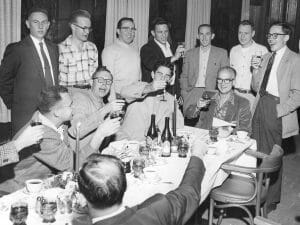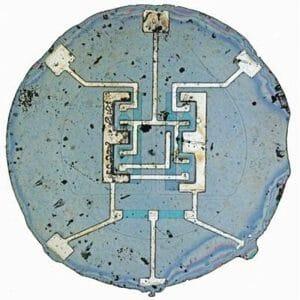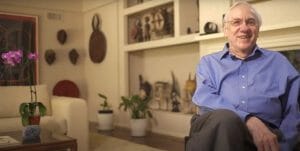Born in Pennsylvania just as the Depression was starting, the Last family struggled to make a living. At 16, Jay Last hitchhiked to California to pick fruit for the summer; he carried a letter from his hometown police chief testifying the boy had not run away from home, and had his parents’ permission. He was a terrific student, and studied optics at New York’s University of Rochester. After earning his bachelor’s degree in a program where 75 percent dropped out before the end, Last, who also had developed an interest in physics, moved to MIT to study that, earning his Ph.D in 1956. He was offered a job at the “glass lab” in his home town. “I went and told my parents,” he said. “My mother said, ‘Jay, you can do a lot better than that with your life.’” He liked California and considered going there to work for General Electric, Bell Laboratories, or Beckman Instruments. Arnold Beckman himself referred Last to the founder of a new division, William Shockley, who flew to MIT to meet and interview him.

Upon meeting Shockley, Last said later, “I thought, my God, I’ve never met anybody this brilliant. I changed my whole career plans and said I want to go to California and work with this man.” Shortly after Last started work, Shockley won the Nobel Prize in Physics (with two others he worked with at Bell Labs) “for their researches on semiconductors and their discovery of the transistor effect.” But Last’s time at Shockley Labs was short-lived: he was one of many disturbed by Shockley’s authoritarian management skills, and seven key employees, including Last, appealed to Beckman to intervene. Beckman refused, so the seven employees, shortly joined by one other, left to form their own company, funded by Sherman Fairchild. Shockley was irate, and dubbed the men the “Traitorous Eight”: Julius Blank, Victor Grinich, Jean Hoerni, Eugene Kleiner, Gordon Moore, Robert Noyce, Sheldon Roberts, and at 26 the youngest, Jay Last.

Was he scared to quit? “When you are in your late 20s you don’t know enough to be scared, we just did it,” he said later. “We just knew what we had to do and we did it.” The company was set up as Fairchild Semiconductor, and the team almost instantly got a contract from IBM for custom transistors, which they delivered within the first year of operation. IBM paid $150 for them — each (the equivalent to about $1,500 today). But more importantly, the team developed — with Last leading the team working on ideas developed by Noyce — the first workable integrated circuit, on a silicon chip, rather than what was being used by others: germanium, which was much more expensive. The successful chip was the foundation of California’s “Silicon Valley”. About then, Sherman Fairchild exercised an option to buy up the eight partners’ shares in the company. Last said that turned the partners into ordinary employees, destroying the team spirit.

In 1961, half of the “Traitorous Eight” left Fairchild to start a new company, Amelco, as a subsidiary of Teledyne. Dr. Last served as the Director of Research and Development. They created I.C.s used by NASA and military space operations, including for the Apollo Guidance Computer that got astronauts to the moon landings, guided landing, and set the path back home. When picking fruit in the Santa Clara valley as a teen, Last loved the colorful labels on the boxes. Photolithography is also used to “print” integrated circuits on the silicon wafer. He donated his personal collection of lithographic art — more than 180,000 printed artifacts from the 1800s and 1900s — to the Huntington Library in southern California. Jay Taylor Last died November 11, less than a month after he turned 92.
—
Author’s Note: With Last’s death, Gordon Moore (who coined Moore’s Law) is the last of the Traitorous Eight.
